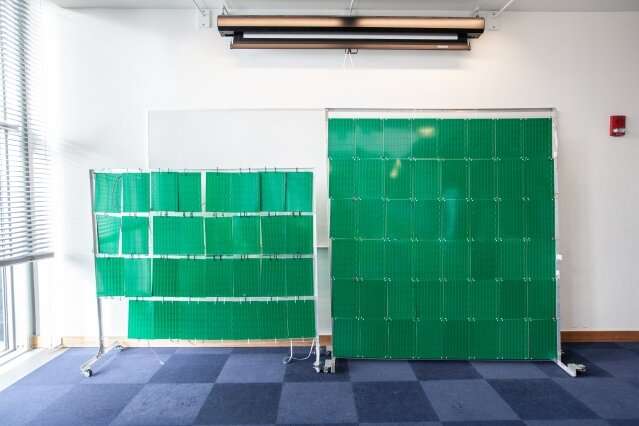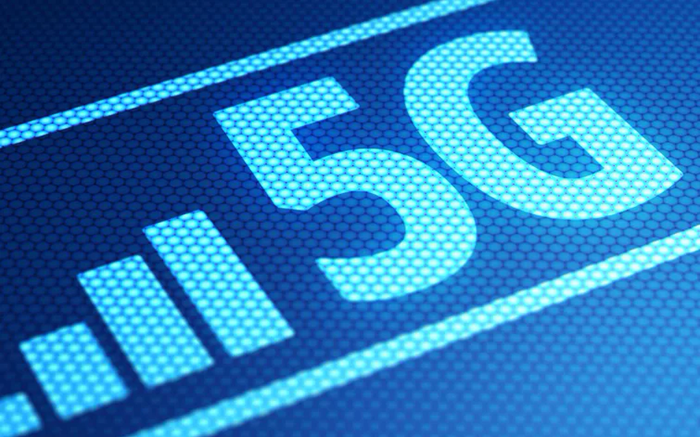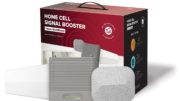No promises, but the days of bad cell signal could come to an end. I’ve talked for years about how your home’s construction actually blocks cell signals. In an amazing feat of coincidence, practically every common building material from brick to stucco blocks cell signals really well. Your windows aren’t much better. And it’s only going to get worse with millimeter-wave 5G, which will have worse penetration than regular cell signals.
Finally, after decades of building homes to repel cell signals, we may finally be ready to build homes to improve them.
Those crazy cats at MIT
According to this article at TechXplore, researchers at MIT have developed low-cost smart panels which can be mounted on walls.

Sure they’re not much to look at today, but these panels could cost no more than a few cents each and could amplify and distribute any kind of signal through your home. They’re full of thousands of tiny antennas that can act like the indoor antennas in today’s cell booster systems.
It’s possible that the same panel could work with different systems, or that a mix of panels could be employed so that Wi-Fi, antenna and cellular signals go just where they need to go in your home.
Making these simple panels work the way people want comes down to some fancy software, which could absolultely find its way into cellular booster systems in the future.
Something like this is a must for the future
I’ve told you before that there are two types of 5G. Low-band 5G is rolling out today, using frequencies formerly used for TV. The real holy grail, though, is millimeter-wave 5G. That service will let you get ridiculous speeds and super low-latency.
Unfortunately, millimeter-wave signals really don’t penetrate walls at all. The same signals are used today for satellite TV, and the fact is you simply can’t have a dish inside. It has to be outside.
In order to get millimeter-wave 5G in your home or office, you’ll likely need some sort of booster system. And because the penetration through walls is so poor, it’s going to need something like what the folks at MIT are proposing.
By using inexpensive panels to put signal where you want it, you’ll be able to get really good signal even with the tricky millimeter-wave stuff. This is the kind of technology that will allow 5G to potentially replace home internet, and do it effectively.
Of course we’re still in the early stages.
Having seen breakthroughs from universities before, I’ll tell you it often takes five years or more before they make it out into the world. In the meantime there are going to be questions. Can you paint these panels? How durable are they? How many do you need? How will they be wired? The real-world applications all need to be worked out. That’s going to take a while.
In the meantime though, I am just finally glad to have some good news to report about this long-standing problem.





